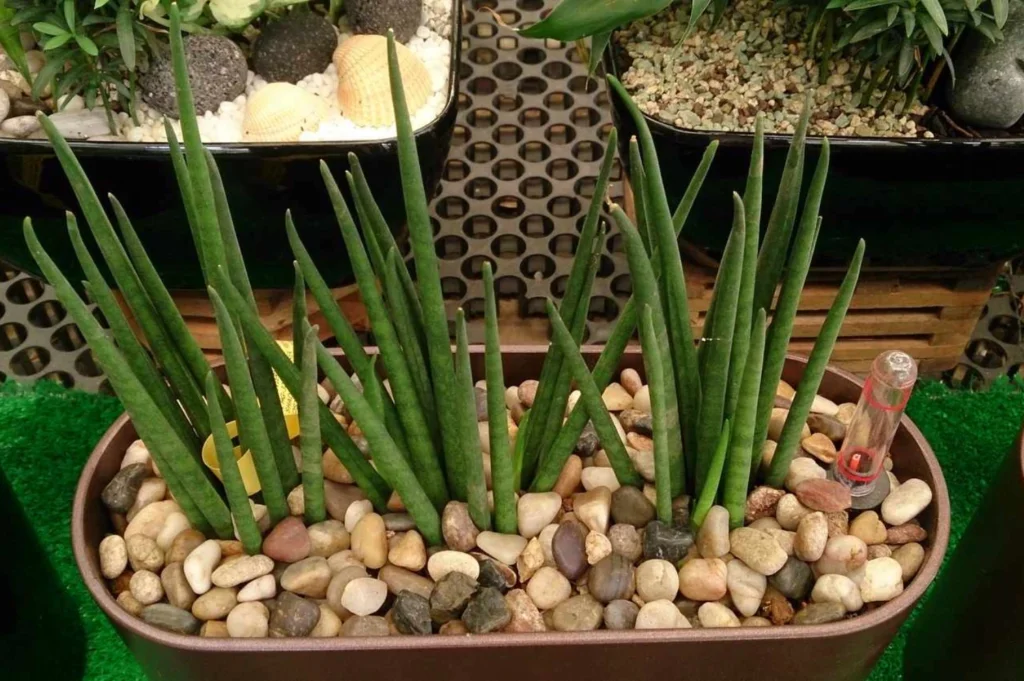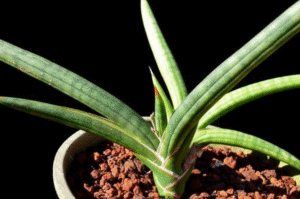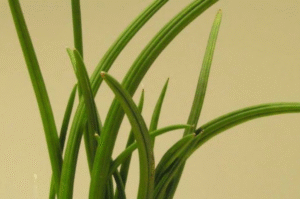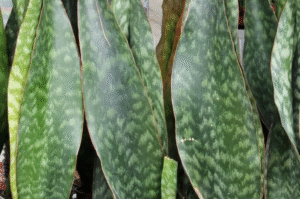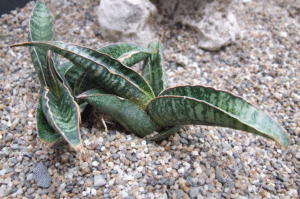If you’re looking for a plant that adds a modern touch to your home and doesn’t demand much attention, Sansevieria bacularis is a fantastic choice. With its tall, thin, tube-like leaves, this snake plant is ideal for people who love stylish greenery without the hassle of constant care.
In this guide, you’ll learn how to plant, grow, and care for Sansevieria bacularis, so it thrives indoors with minimal effort.
What is Sansevieria bacularis?
Sansevieria bacularis, sometimes labeled as Dracaena bacularis, is a lesser-known member of the snake plant family. It originates from Africa and features tall, narrow, upright leaves that resemble sticks — hence the name “bacularis,” from the Latin word baculum (meaning stick).
Fast Facts:
| Detail | Description |
| Common Name | Sansevieria bacularis |
| Botanical Name | Dracaena bacularis (synonym) |
| Plant Type | Succulent (Snake Plant Family) |
| Light Preference | Bright, indirect sunlight |
| Water Needs | Low (only when dry) |
| Growth Habit | Upright, stiff, cylindrical leaves |
| Pet Safety | Mildly toxic if ingested |
Planting Sansevieria bacularis: Step-by-Step
Starting correctly is essential for long-term success. Here’s how to plant it properly:
1. Use a Pot with Drainage
Choose a pot that allows water to escape easily. Terracotta pots work best because they dry out faster, reducing the risk of overwatering.
2. Pick the Right Soil
A well-draining soil mix is non-negotiable. Use a cactus or succulent mix, or blend your own:
- 2 parts potting soil
- 1 part perlite or coarse sand
- Optional: 1 part pumice for added drainage
3. How to Plant
- Place a small layer of stones at the bottom of the pot (optional).
- Add your soil mix and center the plant.
- Fill in the sides and press the soil down gently.
- Water very lightly, just enough to settle the soil.
Growing Sansevieria bacularis: Ideal Conditions
This plant is naturally tough, but giving it the right care will ensure stronger growth and better appearance.
1. Light
It prefers indirect sunlight, but can tolerate lower light areas. Avoid placing it in strong, direct sunlight as it may burn the leaves.
Tip: Rotate the plant every few weeks to keep the leaves growing straight.
2. Watering
This is a drought-tolerant plant, so underwatering is better than overwatering.
- Water every 2–3 weeks in warmer months.
- In winter, water just once a month or less.
- Check the top 2 inches of soil, only water if it’s completely dry.
3. Temperature and Humidity
Sansevieria bacularis does best in warm, dry conditions:
- Temperature: 65–85°F (18–29°C)
- Humidity: Low to moderate
- Avoid placing it near cold drafts or heating vents.
4. Feeding
During spring and summer, feed once a month with a diluted, balanced fertilizer (like 10-10-10). Don’t fertilize in winter.
Maintenance Tips
Pruning
This plant requires very little trimming. Only cut away damaged or yellowing leaves.
Cleaning the Leaves
Gently wipe the leaves with a damp cloth to remove dust. This keeps them clean and helps with light absorption.
Repotting
You won’t need to repot often; once every 2 to 3 years is enough, or when roots outgrow the pot.
Troubleshooting: Common Issues and Fixes
Here are a few problems that may pop up, and how to fix them quickly:
| Issue | Likely Cause | Solution |
| Yellowing Leaves | Too much water | Let soil dry; repot if needed |
| Brown Tips | Dry air or sun exposure | Move to shaded spot; water less |
| Droopy Leaves | Underwatering | Deeply water and monitor |
| Leaf Rot | Root rot from soggy soil | Trim rot, repot in dry soil |
| No Growth | Poor light or nutrients | Move closer to window; fertilize |
How to Propagate Sansevieria bacularis
If you want more of this beautiful plant, propagation is simple.
Best Method: Division
This is the safest way to multiply Sansevieria bacularis.
- Remove the plant from its pot.
- Gently separate the root ball into sections.
- Pot each section in its container with fresh soil.
Optional: Leaf Cuttings
You can also try propagating with cuttings, but the new plant might not have the same cylinder shape. Division is more reliable.
Pet Safety
Sansevieria bacularis is mildly toxic to pets if they chew or eat the leaves. It can cause vomiting or stomach discomfort in cats and dogs. If you have pets, place the plant on a shelf or area out of reach.
Why Choose Sansevieria bacularis?
There are many snake plant varieties out there, but this one stands out for a few good reasons:
- Minimal Watering Needs – Great for forgetful plant owners
- Modern Appearance – Fits well with sleek, contemporary décor
- Compact and Upright – Perfect for tight spaces or desks
- Low Light Friendly – Grows well without direct sun
- Improves Air Quality – Helps remove toxins from indoor air
Final Thoughts
Sansevieria bacularis is one of the best houseplants for people who want something easy to care for, stylish, and long-lasting. Whether you’re a beginner or someone with a full indoor garden, this plant is a reliable, low-fuss addition. By following this care guide, you’ll have a healthy, upright bacularis plant that can brighten up your room with minimal effort. Just remember the three key rules: light soil, less water, and good lighting, and you’re set.

